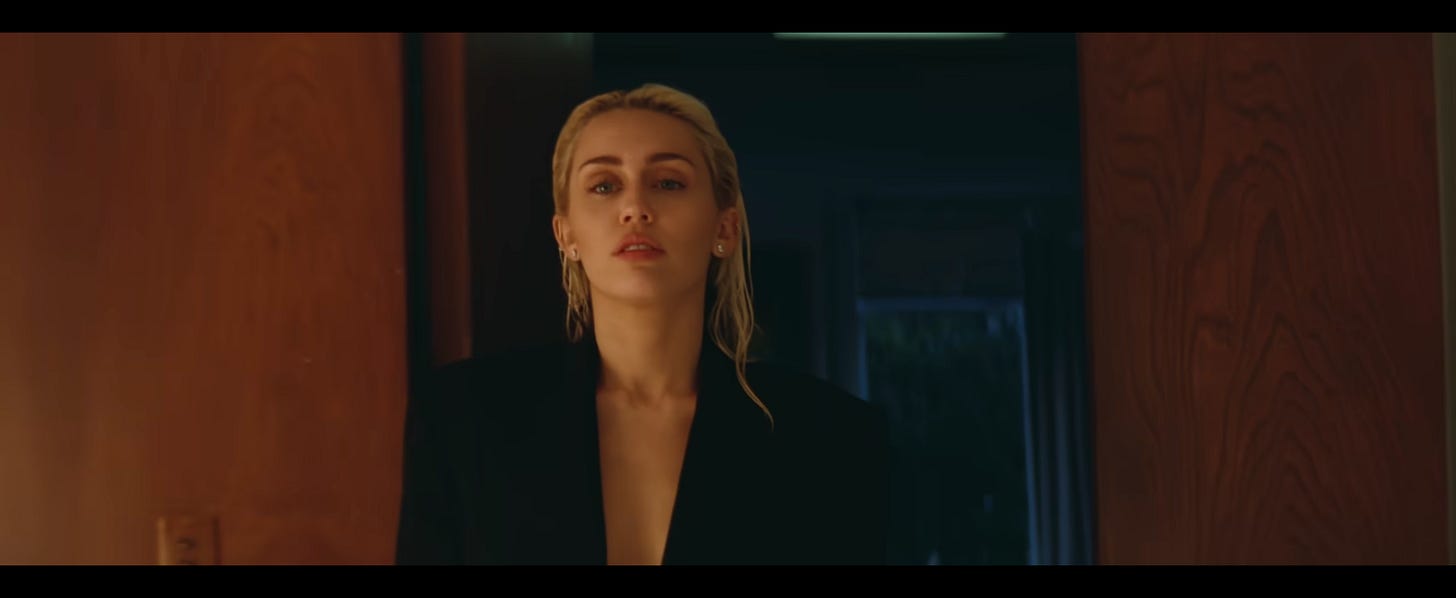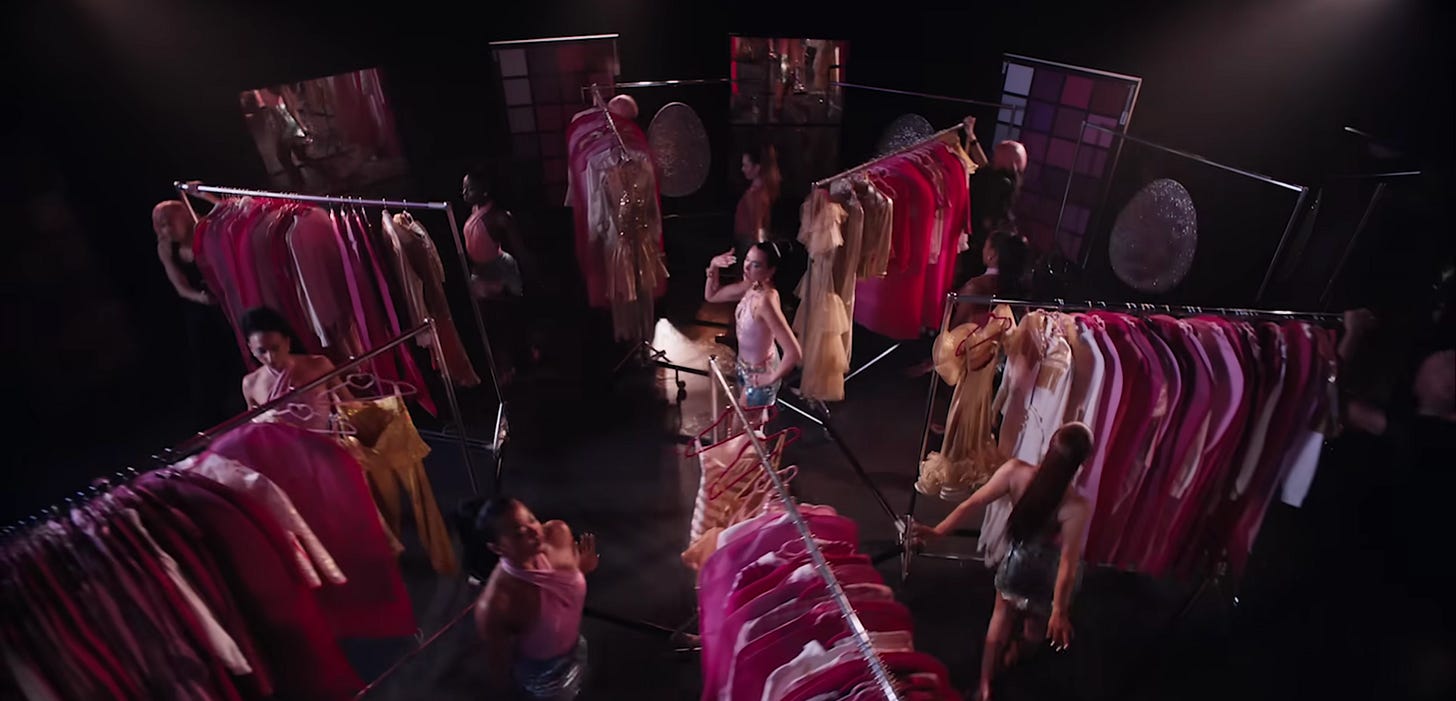One thing about me: I fucking love pop music. I love the joy, love the glitter, love the catchy lyrics, not one hair out of place, dancing and moving and grooving with exact measure, every instrument and vocal meticulously placed. I love the high-end, sleek music video production, the outfit changes, the maximalist femininity, the choreographed dancing, the wonder, a singer slicing through time and space just to perform with you. Dancing, spinning round and round, rehearsed and choreographed and delivered. I love pop music.
I have had the immense privilege to be alive at the same time as the undisputed queens of pop, genre-bending women, vocal, maximalist, and full of glitter, ranging from Madonna to Beyoncé to Britney Spears to Miley Cyrus to my latest pop queen addition, Dua Lipa, to name a few.
Being a pop star is not only being a performer, a singer, or a dancer; it’s a brand. A powerhouse of performance and feeling, trend-setting, culture-shaping artists. A bop is a bop, and these women have continued to deliver, shaping our pop music culture in such a way that imagining pop music without them (at least in my mind’s eye) is impossible to do. Their influence (and influences) mark the past 3 decades and their world stage, carrying millions of fans through their teenage years and into their adult lives with music meant to soundtrack their dance party, their sleepovers, their heartbreaks, their first loves.
Few music genres are as all-encompassing as pop music is, and few performers in the field reach icon status. It doesn’t take pure musical prowess or biting songwriting — it takes squeezing the zeitgeist and making potions out of the droplets of our culture as-is. It takes creating a dialogue with audiences, and singing it back to them. It takes rehearsals, molding and shaping and curving, to create a beautiful escape room. Music videos, launches, worldwide tours —from Beyoncé to Taylor Swift— pop music transports us to a world where the glitter never stops falling, the fabrics shimmer and sparkle, the movement is always right on the beat. It is absolute, excellence in artistry, really, and few things compare to the absolute dedication to worldbuilding that pop music possesses.
This is why, growing up, I always found it ridiculous when pop music was met with condescension at best, mockery at worst. Until I understood that the reason for this wasn’t so much a debate about “musical prowess” or even the quality of it —which is always, as anything in art, completely and utterly subjective— but about women making moves in a decidedly patriarchal world. Who were these women making out at the VMA’s? Why is Miley Cyrus wearing revealing clothing now? Madonna should really accept that she’s getting older. Taylor Swift has had one too many boyfriends.
All of these narratives were always closing in on a woman’s body, a woman’s career, and a woman’s mark in the world. In the world of entertainment, a magnifying glass multiplies the impact of every critique and observation — one only has to look at the recent debacle about Swift and Healy’s short-lived relationship, and how fans reacted to the affair in the context of politics, Healy’s (problematic) history in the public eye, and the overall bitter after-taste of Swift’s Good Girl image, once again tarnished.
One of the many reasons I think pop music fans and audiences alike grapple so heavily with a woman’s image —especially if said woman is a pop star herself— lies in the very mechanics of the genre (besides the simple fact that they are women). Pop music has historically been a huge vehicle for meaning and feeling, transporting listeners into a world built with addictive hooks, slamming choruses, and satisfying denouements, a world of glitter, absurdism, humor, and fun, a world where you’re the main character and the world is yours for the taking.
Pop music is, like many other genres, an escape. Unlike many other genres, it tends to focus on female pop stars, the vehicles for our feelings of glamour, maximalist femininity, and catchy tunes. Of course, I understand there are male pop stars too; for the sake of this one, though, my focus is on their female counterparts. These are the women who made an imprint on my life, who shaped my pre-teens, teenage years and now my twenties, who I fall back on to dance, cry, sway, scream to. Female pop stars are a cornerstone of our culture as much as they are a guide to where culture is headed. Their collaborations, ranging from clothing lines to perfume launches, from advertisements for fast cars, and high-end fashion brands, to the affordable lines that fill H&M shops everywhere, shape our tastes and trends. They are taste curators and tastemakers, a vision and a mirror into a world that never stops dancing.
Pop songs are generally 3 to 4 minutes in length. Every song follows a similar structure: a first verse, followed by a buildup, a pre-chorus, chorus, and a hook. A resolution comes not long after, and if the song is a chosen single, it’s usually paired with an equally structured, manicured music video to match. I’ve always loved the structure of a pop song; I find it relaxing. I like the repetition, buildup, and release, the instrumental breaks as a cue to dance, the world of sparkle and fun, and yes, humor. I like how the tempo of a pop song with the saddest lyrics you’ve ever heard can bring the darker hues of being alive into a whole new color, painting your world and your heartbreak and your sorrow in the colors of magenta, silver, bright blue, screaming yellow. They alchemize these feelings with you, and you, too, are part of a music video where you’re the wronged lover, the heroine, the artist, the dancer.
In the world of pop music —in the world of female pop stars— you both aspire to be, and are, the main character. In the world of pop music, female pop stars are affectionately called “Mother!,” The world watches on for the next costume change, every diamond painstakingly placed on a guitar, every microphone and prop adorned and planned for months, Beyoncés dresses, bodices and one-pieces nodding at moments and eras in her incredible, decades-spanning career.
It’s a perfect world in female pop music, except when it isn’t. It exists in the same world that’s filled with problems, with inequalities, with injustice, with violence. Pop music is an escape, but it can also be some sort of heaven; one where the dancing is for everyone, where hope is possible. In pop, I shimmer and sparkle, and the confetti never stops floating.
In pop, the confetti is forever. It's a perfect world — if only for an average of 3 to 4 minutes, or 3 minutes and 31 seconds.






